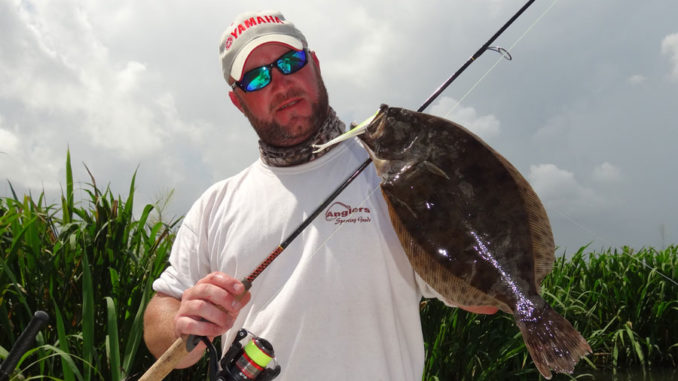
Find bait, fish the right tide with the right technique and you’ll put South Carolina flounder in your cooler.
One of the more desirable fish along South Carolina’s coast is the flounder, appreciated by many not only for its fight, but the quality of the fish as table fare. Clayton Crawford of Russellville is one guide to loves to target them, having developed a special affinity for them over the years.
“Flounder fishing is sometimes overlooked with some of the other species getting more attention,” said Crawford, who fishes the area around Charleston and up the Intracoastal Waterway to McClellanville. “For one, many fishermen just don’t know how to catch a lot of flounder, and sometimes, it’s easier to go catch a bunch of other types of species. But flounder can be caught in good numbers and excellent sizes all along the coast.”
Flounder are caught throughout the summer, but Crawford said June is really an excellent time to focus on them.
“During June, a great deal of baitfish are available because the water has warmed and the flounder are feeding,” Crawford said. “The presence of all the various forms of baitfish has the flounder feeding actively on a variety of forage and that’s one of the two primary keys to success. First, find the baitfish and then fish the right method on the right tide, and you’ll likely be in the founder-catching business.
“Plus, I think the fact that they feed on a lot of different forage also makes them very susceptible to being caught on artificial lures. I’ll use live bait a lot because sometimes my clients are not real familiar with the light bite of a flounder on an artificial lure, but they will most certainly be caught in big numbers and sometimes doormat sizes on lures like the 3-inch Gulp! Jerk Shad, certainly one of my favorites.”
Crawford catches flounder over the entire area he fishes, but he will usually find an area that is hot, and he’ll work that area until the forage and fish move to new locale.
“That’s one thing a lot of fishermen miss, that flounder, like most gamefish, salt or freshwater, will not stay in the same place all the time,” he said. “As the water temperature changes and the season progresses, they will move to new areas. Of course, they move from a specific area from a high tide to low tide, but after a while, they’ll move from an entree general area, sometimes only to return again when conditions are again favorable. The point is, don’t spend too much time in one area if you haven’t fished it for a while and the action is slow.”
“But I have found that a general area can be productive for a while before I have to make a big move and find a totally different type of place to fish.
“During June, I’m looking for moving water, and the junction of small creeks, ditches or anyplace where water flows in or out of the grass in the larger creeks as prime spots to flounder fish,” he said. “If there’s baitfish in the area, they’ll congregate at the small points and pockets along the edge line and that’s where we’ll catch the flounder.”
One thing Crawford does that’s different from most other anglers is that he uses his electric motor to troll for flounder. He uses a bottom rig with a homemade cord-weight similar to what catfishermen use for drift-fishing, but he uses about a half-ounce because he’s fishing fairly shallow water, then 18 inches of leader and his hook. His favorite live bait is finger mullet, which he catches at dawn with a cast net. He will also troll a couple of rods rigged with Gulp! Jerk, having discovered that trick while targeting redfish and catching flounder incidentally on those baits.
“Catching my own bait helps in two ways,” Crawford said. “First, I cast until I get just the right-size bait I prefer for the season I’m fishing. Right now, I’m using 2- to 4-inch bait hooked through the lip and top of the head so it will swim naturally behind the sinker. Bigger bait will catch fish, but by using bigger bait, you take some legal-sized fish out of the equation in terms of readily biting. Second, I will also know before I start fishing that I’m in an area where baitfish are plentiful. So I use live and artificial baits to ensure I give them a choice.
“The drag sinker I use is much less likely to snag than a barrel sinker,” Crawford said. “I use the trolling motor to ease the boat in and out of shallow water to slightly deeper water to cover more depths and to effectively fish an entire area. This is key anytime of the year. Flounder will sometimes be in a small nook or cranny that you can effectively fish using your electric motor, but not with your big outboard rig. On cloudy days, they are sometimes much shallower than many people tend to fish.
“A lot of times I’ll find the fish in water as shallow as two or three feet,” he said. “That is often shallower than a lot of fishermen using the big motor for trolling will go. I also will work back out into the 5- to 7-foot depth range and sometimes deeper to cover those depths. Usually, when I get on a good pattern it will hold for a while, but as the water depths change as the tide moves in or out, I have to refine the fish-catching pattern. Sometimes, we’ll catch several flounder real quick, maybe two or three at the mouth of one creek or ditch junction. Then conditions change, (and) I’ll find them deeper or shallower somewhere else. It’s a fun process of searching because when you get on the right pattern, you can often catch several quickly from the same general area.”
Mike Cox of Awendaw is also a flounder fisherman who said that a lot of anglers simply don’t fish shallow enough to catch flounder as frequently as they could.
“Fishing shallow is a key, but stealth is essential,” Cox said. “At night when gigging, flounder are shallow and not as easily spooked and are much easier to approach. During the daylight hours, they can be very spooky. But they are ambush predators and will lie in wait along the edge lines of creeks and waterways where the forage will be moving along with the current. They are very opportunistic feeders so they will get shallow but you need to keep the boat away from them. They can be caught from ultra-shallow water by using a float rig and live bait and casting above a creek intersection or shell bed and let the bait drift over it. You can catch several flounder in rapid succession if you stay far enough away and don’t spook the fish.
“I’ve found through the years that a mixed sand-and-shell bank with small creek intersections along the way generally produces best at this time of the year,” Cox said. “Plus, the mud-and-shell banks will also produce well. But on any given day, you may find fish on a sand bank or a primarily shell bank, so don’t get locked into a single set pattern in terms of mind frame. But those are good starting points.”
Crawford prefers the last couple of hours of the outgoing and first two hours of the incoming tide for flounder. He uses 20-pound braid with a 20-pound fluorocarbon leader.
“The fluorocarbon leader can be a key element for catching these fish, so I stick with that when fishing for founder throughout the summer,” he said.
Crawford said the overriding key to success is to understand your quarry.
“Know the biology of the fish and use it to your advantage,” Crawford said. “I love fishing for flounder, so I’ve learned what triggers the fish to feed. Remember, flounder are an ambush feeders, not as wandering, grazing-type feeder. Use that knowledge as a tool so you can ambush this ambush predator.”
DESTINATION INFORMATION
HOW TO GET THERE — Charleston is centrally located for great flounder fishing both in the major rivers — the Ashley, Cooper and Wando — rivers and along the ICW. Charleston is easy to access from I-26 inland and from US 17 from north and south. Charleston has numerous marinas and public launching facilities.
WHEN TO GO — June is prime time to catch flounder — lots of flounder, as well as those prized doormat-sized fish. Good fishing continues throughout the summer and into the fall as late as October, but June ranks as among the favorites months for most anglers.
BEST TECHNIQUES — Trolling is a method frequently used, but anchoring and casting to a target such as a creek mouth or creek junction is also effective. Specific hot spots will change on a daily basis as the tides rise and fall. Also, general areas will be good for a while, then change. The key is always follow the forage. Flounder are ambush feeders and will be setup in relatively shallow water to ambush some type of food. Present your live or artificial bait properly, and you’ll be hooked into these tasty flatfish.
GUIDES/FISHING INFO — Capt. Clayton Crawford (843-277-4477); Atlantic Game & Tackle, Mount Pleasant, 843-881-6900; See also Guides and Charters in Classifieds.
ACCOMMODATIONS — Charleston Area Convention and Visitors Bureau (www.charlestoncvb.com); South Carolina Association of Visitor bureaus (www.discoversouthcarolina.com).
MAPS — Maps Unique, 910-458-9923, www.mapsunique.com; Capt. Seagull’s Nautical Charts, 888-473-4855, www.captainseagullcharts.com; Sealake Fishing Guides, 800-411-0185, www.thegoodspots.com.

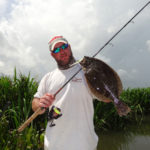
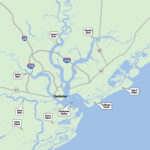
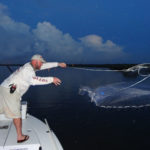
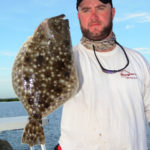




Be the first to comment